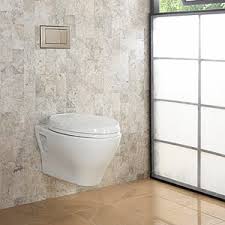What are Incinerating Toilets (Updated March ’20)
When people think of toilets, they don’t usually think about anything other than the everyday, run-of-the-mill toilets that are found in most homes and businesses throughout the United States. However, it is important to know that there is indeed another type of toilet in existence, the incinerating toilet. If you are like most individuals, you have at least heard of this type of toilet, even if you have long ago forgotten that again. Without a doubt, there are many things that are different between an incinerating toilet and one of the more traditional models that is connected to plumbing.
THE METHOD OF OPERATION FOR AN INCINERATING TOILET

First and foremost, it is important to realize that the incinerating toilet does not connect to any type ofplumbing like a regular toilet does, as previously mentioned. Instead, it burnswaste, hence its name. The truly unique thing about this type of toilet is that it can be powered by either gas or electric. In some rare cases, it is even powered by dried feces, especially when there are no other appreciable energy sources available. When using this particular kind of toilet, the waste is gathered inside a holding tank. After the waste reaches a certain level, it is then burned, or incinerated, until the ashes are completely free from any type of biological hazards. Those ashes can then be scraped out of the holding tank and safely buried without causing any harm to the environment whatsoever. This is an effective way to dispose of waste when it is not possible to use one of the more common types of toilets. In some cases, it is even possible to include urine or the water that runs down the drains of showers and sinks so that the incinerating toilet can truly become a complete and effective waste disposal system.
COMMON USES
More often than not, the only time this type of toilet is used when is not possible to use any other type of system. For instance, many people choose to use them in especially cold climates, such as the outer areas of Alaska. It isn’t always possible to use regular plumbing in these areas because it can become so cold that the pipes freeze almost constantly. In some of the coldest areas of the region, it is not even possible to have running water inside the home in any capacity. Therefore, it quickly becomes necessary to find an effective way of disposing of waste for anyone that plans on staying in the area for any length of time whatsoever. This is why incinerating toilets are so popular in the region. They provide an effective means of maintaining a certain level of cleanliness, despite the significant challenges that are presented in areas such as this.
THE BOTTOM LINE
In cases such as these, an incinerating toilet can be the solution to the problem. In addition, these types of toilets might be set up on a temporary basis when there is no infrastructure in place to connect a regular toilet to any existing plumbing. Some people even choose to use them because they feel that they are more environmentally friendly when compared to other types of toilets. Research is ongoing in an attempt to develop these systems for mainstream use, all because the waste can be disposed of more safely from an environmental perspective.
SUMMARY
While most people don’t have any first-hand experience with an incinerating toilet, they are a very important part of everyday life for others. In many places of the world, it would be virtually impossible for someone to live or work without these types of toilets in place. Whether they are set up on a temporary basis or they are permanently in place, these types of systems provide options in situations where there otherwise might not be any. In addition, the promise they hold for the future is vitally important, especially where the health of the environment is concerned. It is interesting to think about the idea that at some point in the future, these toilets might be found in homes and businesses across the United States and in many other parts of the world, perhaps even effectively eliminating the need to connect a toilet to plumbing as it is in most cases today.
